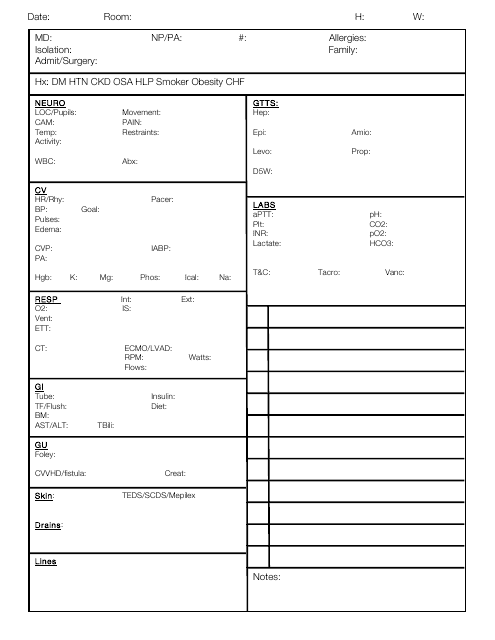
The project team looked for tool content that would meet the needs of Nebraska Medicine and use various aspects of the EHR to provide ease of content identification. The team reviewed the current SBAR handoff tool, listing its pros and cons, and then investigated other tools. A sub-committee of the practice council was created to work with the project team to research existing handoff tools and build a tool to better meet the organization’s needs. The inpatient oncology and hematology specialty care unit expressed an interest in working to improve its handoff process, so the project team engaged unit leadership and staff to help during the initial phase of the project, identifying gaps in information and processes.Īs the project progressed, the hospital’s shared governance practice council was brought in because it would ultimately be responsible for the handoff process. The team started by working to understand the negative issues related to the current handoff process.

#Ipass nursing report sheet professional#
The team consisted of leadership from nursing professional practice and development, enterprise applications (electronic health record analysts), clinical effectiveness, and clinical decision support. Nebraska Medicine created a project team to produce a standardized handoff tool and process.

Active communication between nurses is essential to ensure a comprehensive handoff. Ideally, handoff would be a streamlined process between the outgoing and oncoming nurses at the patient’s bedside with limited interruptions, individualized care plan communication, and patient and family inclusion. Using The Joint Commission, Agency for Healthcare Research and Quality, and National Quality Forum recommendations for standardized and systematic communication, Nebraska Medicine aimed to design a project centered on creating a standardized shift-to-shift handoff tool and process for all inpatient nurses. The organization noted that any lack of standardization placed patients at increased risk for medical errors and serious adverse events.īecause the greatest number of handoff opportunities occur during shift-to-shift transitions, Nebraska Medicine chose to focus its initial efforts on improving the process at this level. Although the organization used the SBAR (Situation, Background, Assessment, Recommendation) tool for handoffs and encouraged patient and family participation in the process, an opportunity for improvement and reduced variability existed. Nebraska Medicine, an academic medical center in Omaha, recognized the variability in its handoff process across units and disciplines.

In addition, handoffs conducted at the bedside encourage the patient and family to participate in the care plan. Handoffs completed at the patient’s bedside-which allow for direct patient visualization and communication between caregivers-improve the process. According to Wheeler, approximately 70% of serious medical errors are the result of ineffective handoff communication. When handoff is compromised, the patient is placed at an increased risk for an adverse event.

Most communication errors occur during this information transfer, especially during shift-to-shift handoff. any other pertinent information necessary for continuity.Information shared during the handoff process typically includes This occurs several times throughout a patient’s hospital stay, so successful communication between nurses is essential to providing relevant information related to the patient’s care and condition and ensuring care continuity. Handoff is a real-time process that involves the transfer of essential patient data from one caregiver to another. Consequently, both agencies have emphasized improving and standardizing handoff communication. In addition to adverse events, ineffective handoff communication also has contributed to prolonged lengths of stay, avoidable readmissions, delayed or inappropriate treatment, increased costs, inefficiencies related to rework, and care omissions. Author Guidelines and Manuscript Submissionįor several years, The Joint Commission and the Agency for Healthcare Research and Quality’s hospital survey on patient safety culture have cited care transitions as an area of concern.


 0 kommentar(er)
0 kommentar(er)
